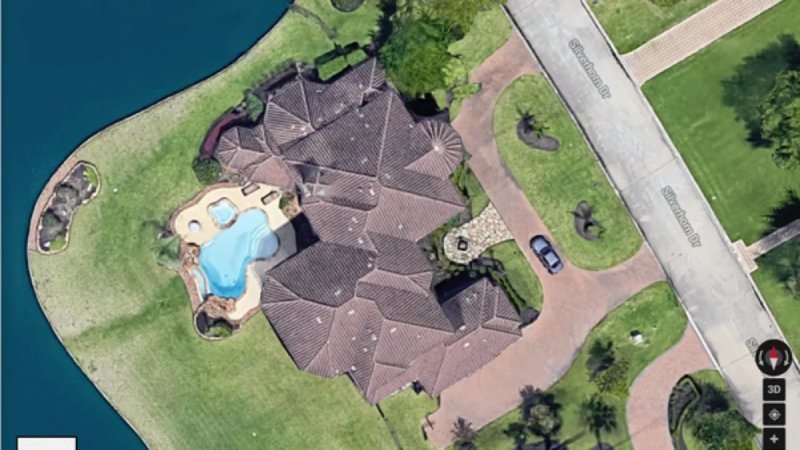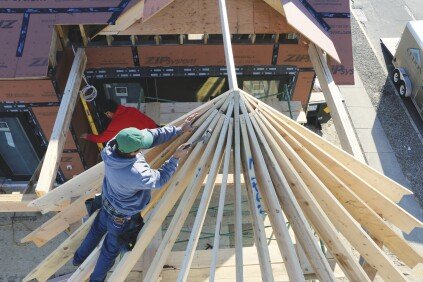
How to Measure a Quonset Roof
- Measure the horizontal width of the Quonset roof to determine the diameter.
- Multiply the diameter dimension by 3.14, referred to as "pi," and then divide the result by 2 to determine the circumference measurement of the Quonset roof.
.jpg)
How to Measure the Roof of a Round Building
1 . Measure the outer diameter of the building.
2 . Measure the amount of horizontal overhang between the building’s outer wall and the roof’s outer edge.
3 . Multiply the amount of overhang by two to include the opposite side of the building.
4 . Add the total overhang to the diameter. For example, a building diameter of 20 feet and an overhang of 1 foot on one side results in a total roof diameter of 22 feet.
5 . Measure the length of the rafters from the peak to the lower edge.
6 . Calculate the total surface area of the roof using the following formula: pi times the radius times the rafter length (slant height).
- Radius = 22 / 2 = 11.
- Surface area in square feet = 3.14 * 11 * 20 = 690.8.
7 . Determine the vertical height of the roof:
- Rafter length squared = 20 * 20 = 400.
- Radius squared = 11 * 11 = 121.
- 400 - 121 = 279. Square root of 279 = approximately 16.7.
- Vertical rise of the roof is 16.7 feet from the outer edge to the peak.

Measuring Roof Slope and Pitch
Slope
Slope is the incline of the roof expressed as a ratio of the vertical rise to the horizontal run, where the run is some portion of the span. This ratio is always expressed as inches per foot.
Slope Ratio
A roof that rises 4 inches for every 12 inches of run is said to have a "4 in 12" slope. A "6 in 12" slope rises 6 inches for every 12 inches of run. These are expressed as 4:12 and 6:12 respectively.

Pitch
Pitch is the incline of the roof expressed as a fraction derived by dividing the rise by the span. The span is the distance between the outside of one wall’s top plate to another.
Pitch Fraction
Historically, pitch meant the ratio between the ridge height to the entire span, or the rafter length to the building width. A roof that rises 8 feet over a 24-foot span has a pitch of 1 to 3. If the rise is 4 feet over a 24-foot span, the pitch is 1 to 6.
The pitch fraction represents a certain amount of vertical rise over the span. For example, a rise of 4 feet over 24 feet results in a 1/6 pitch. A 12 to 24 pitch is 1/2.
